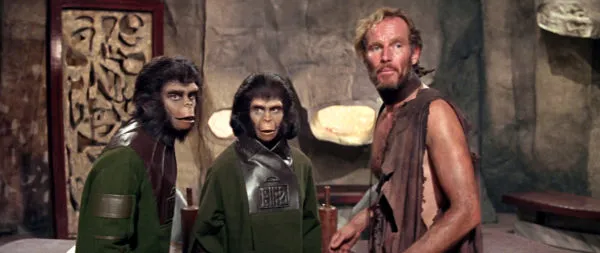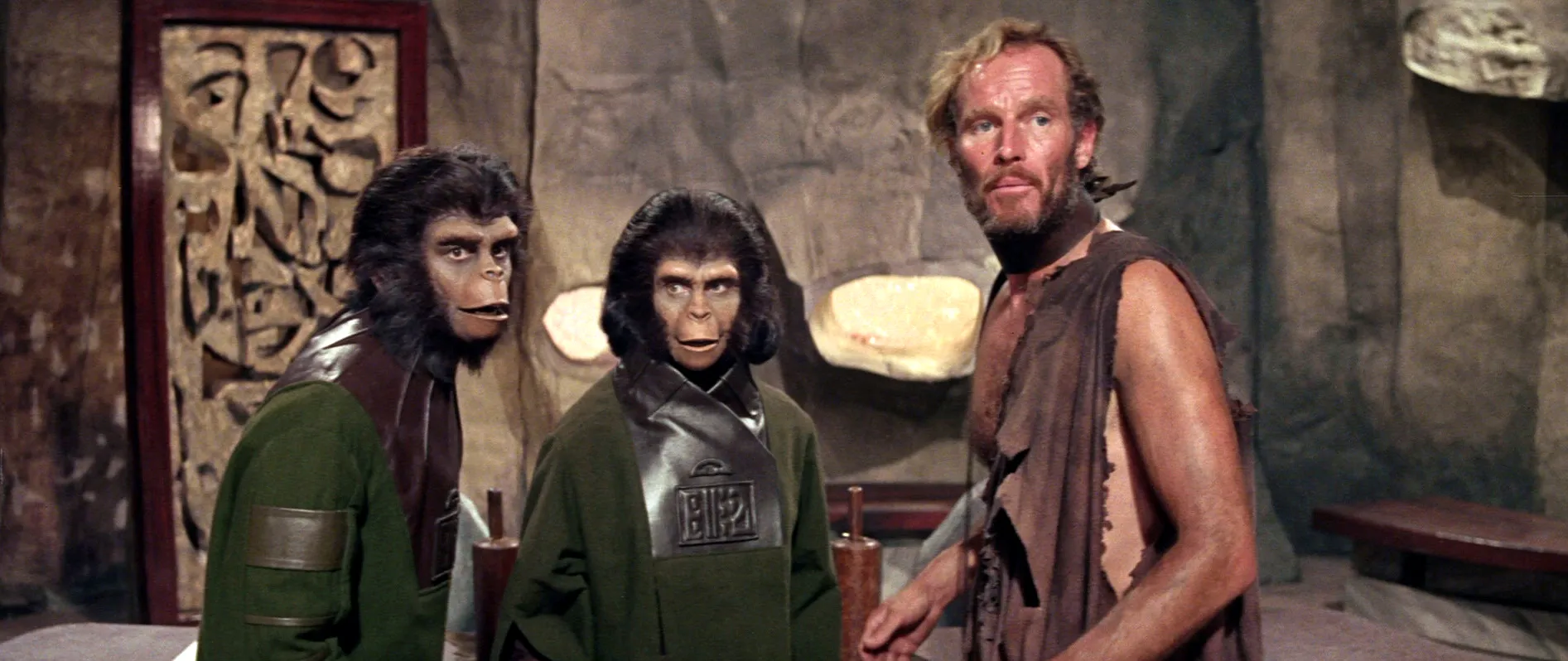
I will preface this Throwback Thursday review by admitting that I watched the original version of “Planet of the Apes” (1968) for a class. As a big sci-fi fan, I definitely knew what the movie was about and knew the infamous twist at the end, but somehow never sat down to watch the film itself. But seeing it on screen was somewhat different than expected. I’ve been incredibly spoiled by the realism that present-day audiences demand from their science fiction films. From “Interstellar” to “Gravity,” film audiences are desperate for what they think is real, or at least, attempting to mimic what might happen. In reality, we don’t know what a black hole looks like; even so, scientific consultants helped CGI artists create what a black hole might look like for “Interstellar.” The filmmakers tried as hard as they could to make it realistic. “Realistic,” I might emphasize. That’s the irony of science fiction – somehow we demand realism, but the realism isn’t actually … real.
And now we come to “Planet of the Apes.” From the start, most of the sweeping landscapes are quite picturesque, as the camera appears to move in and out from the characters to wide shots of the surroundings. But I couldn’t help but laugh at moments that are, today, perceived to be overdone movie clichés – the dramatic zoom-in, the slightly slow and jarring cutting, the overacting done to emphasize an important moment. And maybe that’s a testament to how far we’ve come in film acting and production. The stuff we see nowadays feels real and natural – at least to current audiences. We rely so heavily on subtlety in facial expressions, or the small bits and pieces fed to us by emotional close-ups.
The apes walked like humans, talked like humans and dressed like humans, but the actors wore these bulky face prosthetics – I recommend looking it up if you’re intrigued. Even if at times strange and almost laughable, something about the fact that they honestly kind of looked like what the average person might imagine apes looking like is an achievement within itself.
Despite what might appear fake to modern audiences, in regards to written content itself, “Planet of the Apes” has an interesting premise. Three men have traveled through space and thousands of years of time to crash land on a mysterious, presumably dry planet; they walk and eventually come to a forest or jungle-like location and see what appear to be humans picking foods and dressed in primitive clothing. They hear a strange sound and the planet’s humans begin running. The travelers suddenly see horses running through the fields, except … there are apes riding the horses, firing rifles and guns.
If you’ve seen any of the “Planet of the Apes” franchise reboots, you’ll know that the apes themselves are essentially silent creatures, save for a couple mutant chimps. But in the 1968 version, the apes are ones who talk. It’s a peculiar role reversal, really. The mute humans are locked in a “manhouse” and are stuck behind bars, put on leashes and dragged around for experimentation. This characteristic of the narrative is what is struck me the most – it’s basically the equivalent of humans subjecting others to torturous conditions. I’m not sure if that was in any way the intent of the filmmakers at the time, but it has an alarming relevance in today’s political climate.
The film itself can’t really be blamed for the slightly cringe-worthy visual effects – as it was made nearly half a century ago – and even with all the dated cinematic techniques, the shock factor still hits today’s viewers. So props to “Planet of the Apes.” Props to the film for reinvigorating the “realistic” sci-fi era that we know and love today.
Contact Olivia Popp at [email protected].
